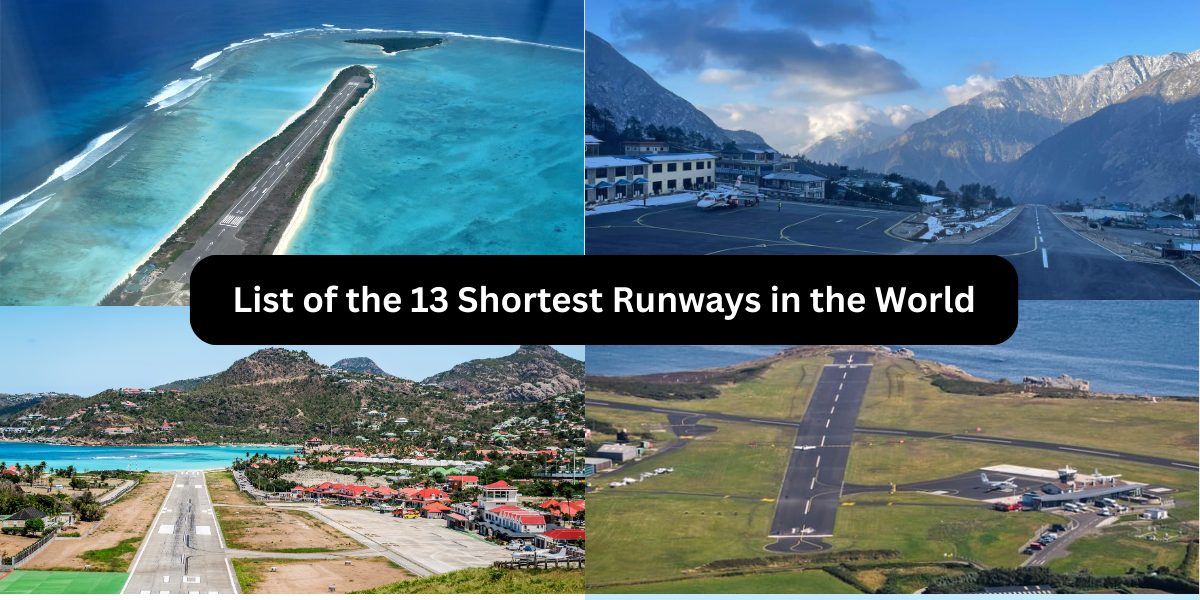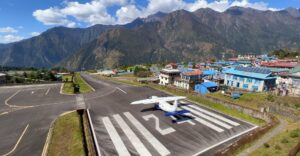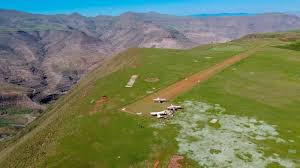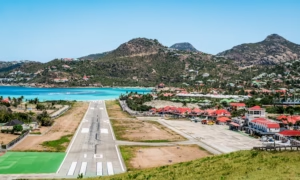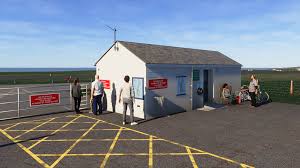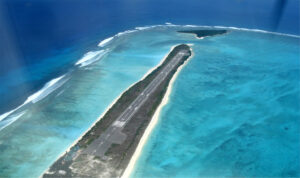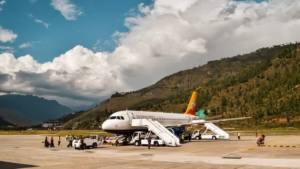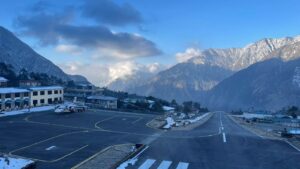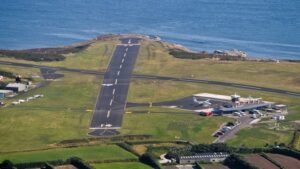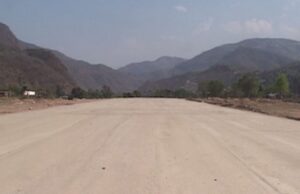In the vast realm of aviation, not all runways are created equal. While major international airports boast expansive runways stretching over 10,000 feet, some airstrips challenge pilots with lengths shorter than a football field.
These short runways, often nestled in remote or rugged terrains, demand exceptional skill and precision. This article delves into the 13 shortest runways globally, highlighting their unique challenges and the thrill they offer to aviators and travelers alike.
Here are List of the 13 Shortest Runways in the World
1. Juancho E. Yrausquin Airport (Saba, Caribbean)
- Runway Length: 1,312 feet (400 meters)
- Elevation: 138 feet
Notable Facts: Recognized as the shortest commercial runway globally, it’s perched on a cliff with the sea at both ends. Only STOL (Short Takeoff and Landing) aircraft like the DHC-6 Twin Otter operate here.
2. Courchevel Altiport (France)
- Runway Length: 1,762 feet (537 meters)
- Elevation: 6,588 feet
Notable Facts: Located in the French Alps, this runway has an 18.5% gradient and lacks instrument approach procedures, making landings particularly challenging.
3. Tenzing-Hillary Airport (Lukla, Nepal)
- Runway Length: 1,729 feet (527 meters)
- Elevation: 9,334 feet
Notable Facts: Dubbed one of the world’s most dangerous airports, it serves as the gateway to Mount Everest. The runway ends abruptly with a 2,000-foot drop.
4. Matekane Air Strip (Lesotho)
- Runway Length: 1,312 feet (400 meters)
- Elevation: 7,545 feet
Notable Facts: This airstrip ends at a cliff edge, requiring aircraft to drop off the cliff to gain flying speed—a true test of pilot skill.
5. Gustaf III Airport (St. Barts, Caribbean)
- Runway Length: 2,119 feet (646 meters)
- Elevation: 48 feet
Notable Facts: Pilots must navigate a hilltop descent and avoid beachgoers at the runway’s end, making landings a spectator sport.
6. Barra Airport (Scotland)
- Runway Length: 2,733 feet (833 meters)
- Elevation: 5 feet
Notable Facts: The only airport where scheduled flights land on a tidal beach. Flight times vary with the tides.
7. Westray Airport (Scotland)
- Runway Length: 1,729 feet (527 meters)
- Elevation: 29 feet
Notable Facts: Offers the world’s shortest scheduled flight to Papa Westray, lasting just 1.7 miles.
8. Agatti Aerodrome (India)
- Runway Length: 4,000 feet (1,219 meters)
- Elevation: 14 feet
Notable Facts: Situated on a narrow coral island, the runway is flanked by the sea on both sides, leaving no room for error.
9. Tufi Airport (Papua New Guinea)
- Runway Length: 2,300 feet (701 meters)
- Elevation: 492 feet
Notable Facts: Carved into the jungle, this airstrip is surrounded by dense vegetation and steep terrain.
10. Paro Airport (Bhutan)
- Runway Length: 6,445 feet (1,964 meters)
- Elevation: 7,300 feet
Notable Facts: Despite a longer runway, the challenging approach through mountainous terrain restricts operations to a few certified pilots.
11. Lukla Airport (Nepal)
- Runway Length: 1,729 feet (527 meters)
- Elevation: 9,334 feet
Notable Facts: Repeated for emphasis due to its notoriety; serves as the primary access point for Everest trekkers.
12. St. Mary’s Airport (Isles of Scilly, UK)
- Runway Length: 1,722 feet (525 meters)
- Elevation:116 feet
Notable Facts: Connects the Isles of Scilly to mainland UK, requiring precise landings due to its short length and coastal winds.
13. Doti Airport (Nepal)
- Runway Length: 1,608 feet (490 meters)
- Elevation: 4,265 feet
Notable Facts: Serves a remote region in western Nepal, with limited infrastructure and challenging approaches.
Conclusion
These 13 runways exemplify the extremes of aviation, where geography and necessity dictate design. Pilots operating in these conditions undergo rigorous training, and their experiences highlight the blend of human skill and engineering marvel. For travelers, landing at these airports offers unparalleled excitement and a story to tell.

